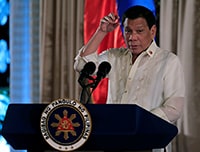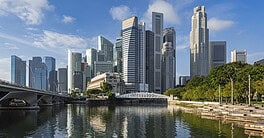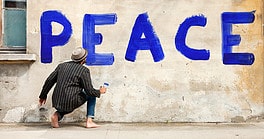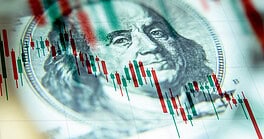While enjoying robust growth and launching big infrastructure plans, The Philippines face potential inflation and growing trade deficits.
Last year, Philippine GDP grew 6.7% and looks to show similar health in 2018, according to the IMF, World Bank and other forecasters.
But a slew of recent data suggests the economy is showing signs of overheating. A population of more than 106 million and an emergent middle class have driven a consumer- and construction-led boom that is stoking inflation and fueling a trade deficit.
Unsurprisingly, pressure is mounting on Bangko Sentral ng Pilipinas, the central bank, to act.

Still, any slowdown may be moderated by the government’s ambitious “Build, Build, Build” program, with infrastructure spending reaching 8 to 9 trillion pesos ($154 to $173 billion) between 2017 and 2022, says ANZ Research. Funding is partly supported by the first package of the controversial Tax Reform for Acceleration and Inclusion bill—dubbed TRAIN 1—which the government expects will increase tax collections by 100 to 130 billion pesos, or around 0.7% of GDP, in 2018.
But it is the long shadow of maverick president Rodrigo Duterte that unnerves investors. His contentious war on drugs has claimed more than 12,000 lives, according to the Philippine Alliance of Human Rights Advocates—though government authorities dispute the figure. It shows little sign of abating, and the possibility he could extend martial law nationwide overshadows confidence. Still, Duterte, seen as an establishment outlier, remains hugely popular among Filipinos.
Hot Growth
January headline inflation surged to 4% year-on-year, the highest in three years. Consumer prices have risen for 23 straight months amid expectations inflation may breach the upper limit of the central bank’s 2% to 4% inflation target range.
Rapid credit growth has sucked in imports, causing a record trade deficit of $3.8 billion in November and heaping pressure on the peso, the proxy for swelling economic imbalances. Indeed, the peso was Asia’s worst-performing currency last year, with the real effective exchange rate—a trade-weighted index that adjusts for inflation—down 10%.
Conducting business also remains bureaucratic. The Philippines fell sharply in the latest World Bank Doing Business rankings.
Nonetheless, US investors remain positive. “We see GDP about 7% for the present and possibly higher in quarters to come,” says Ebb Hinchliffe, executive director of AmCham Philippines. “The push on tax reform and use of revenue for infrastructure is a positive thing.”
However, Hinchliffe is cautious longer term. “It is harder to budget for 2018 due to unknown changes in corporate income taxes and incentives that may go away,” he says. “I see many members on hold for expansion or investment.”
The Duterte Effect
Since his 2016 victory by a substantial margin, Duterte’s China tilt and quixotic foreign policy have shaken sentiment. His nonchalance over evidence that China has militarized some contested islands in the South China Sea triggered a backlash with Filipinos deeply suspicious of China’s intentions. Duterte remains reliant on soft Chinese loans to overhaul the country’s infrastructure, but he is increasingly walking a political tightrope with Beijing.
“Duterte will not be able to count on public backing to shield him from military and legislative scrutiny if perceived to be compromising Philippine sovereignty,” says Zhixing Zhang, East Asia analyst at Stratfor, a geopolitical intelligence firm. “[That] could open space for his political opponents to mobilize and challenge him.”
And Duterte’s pledge to stamp out corruption is making limited progress, according to Transparency International. The country dropped to 111 out of 180 countries in the latest Corruption Perceptions Index.



